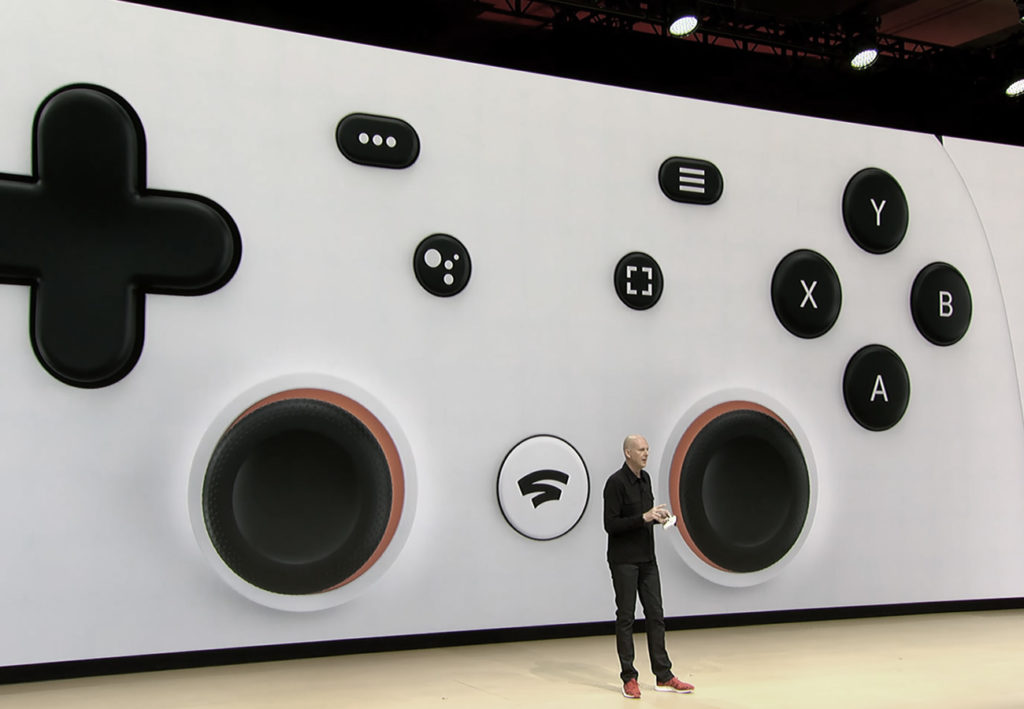Stadia: the First Step Towards Realistic Virtual Universes?

The Matrix, eXistenZ, San Junipero, OASIS: just some of the virtual worlds to which literature, TV and cinema have taken us in recent years. But we are still far from seeing these fantasy lands become a reality. Archaic projects like Second Life or There still fall short of an alternative reality worthy of the name. Could it be that the upcoming arrival of Stadia, Google’s new video game streaming platform, is the first step towards an authentic cyberspace universe? Everything leads us to believe so…
Since the dawn of time, mankind has sought to satisfy its thirst for exploration by pushing the boundaries of known territories. But after resorting to sci-fi to discover new continents, explore space, conquer new planets and, ultimately, the entire universe, our quest ran out of creative fuel. Almost a century ago, in the midst of the science fiction boom, novelists turned to a new frontier: virtual worlds.
In 1935, in his short story Pygmalion’s Spectacles, American writer Stanley G. Weinbaum described the very first fictional virtual reality model. He presented a universe generated by machines where all our senses were stimulated and which was accessed by wearing special glasses. A concept that went on to be emulated in The Matrix, The Thirteenth Floor, Caprica, to name but a few, and that continues to feed the ever-growing fantasy of an imaginary world in which individuals can freely explore and reinvent themselves.

Gods of the Stadia
On March 19, 2019, after several years of secret development, Google announced the arrival of Stadia, a new streaming-based video games platform. If the project succeeds, it could eventually mean the end of consoles and other gaming machines, moving gaming into the cloud, allowing access from any device with a screen and a controller. According to Polygon.com, it is nothing less than the beginning of a real revolution, and the swan song of the current model governing our pixelated leisure activities.
Let’s take it a step further, shall we? At a time when, let’s be honest, our daily lives are becoming more and more burdensome, when the world around us seems driven by madness and stress and burnout are habitual parts of adult life, is it any wonder that the desire to escape to milder skies would become an obsession? Does it not make sense to see Stadia not only as a gaming revolution, but as the beginning of something greater: the imminent arrival of the first realistic virtual universe, in which we could escape the gloom of our earthly lives and live a second, imaginary life, with all the finery minus the worries?

A second life in the cloud(s)
Based on the technical specifications presented by Mountain View engineers at the March 19 conference, Stadia could eventually offer users 8K video streaming at 120fps. By doubling these attributes, it is not impossible to dream of compatibility with the most powerful virtual headsets on the market, such as the Varjo VR-1, and to consider the immersive rendering of a computer-generated universe with a realism never seen before.
And since Stadia’s activity is concentrated in the cloud, the communication between users and the system are limited to the transmission of video and the inputs of the devices. The management of this manufactured world could therefore be done entirely within Google’s infrastructures, without any additional bandwidth costs. A context that would, for example, greatly simplify the evolution of a centralised virtual world, identical for each connected user. Instead of retrieving a local copy, which implies updates and their constraints, users could access this fictional universe entirely remotely from powerful dedicated servers.

The final frontier?
This concentration of data on a central server would also allow multiplayer sessions on scales never achieved before. Forget clashes among 100 belligerents in Fortnite or Battlefield; we are talking here about a world potentially shared by thousands, even millions of participants, accessible from a simple tablet or a mobile phone.
The absence of additional transfers between server and client would also allow the creation of a limitless world, easily competing with the real universe’s infinite nature. An ecosystem of chimeric galaxies in which one could navigate with as much ease as in the nooks and crannies of the current web. Suddenly, this dream of a virtual world inseparable from reality seems to be just a click away.
What is today still only a cultural fantasy could therefore, if Google chooses this path, become a reality in the relatively near future. And like Zoe Gaystone in Caprica, Ronald D. Moore’s unfairly underestimated TV series, everyone could then immerse themselves in another reality, a V-World that can be shaped and shaped according to our desires. The reality of a Second Life is much closer than we think. The technology to make this century-old fantasy come true is already within reach…





